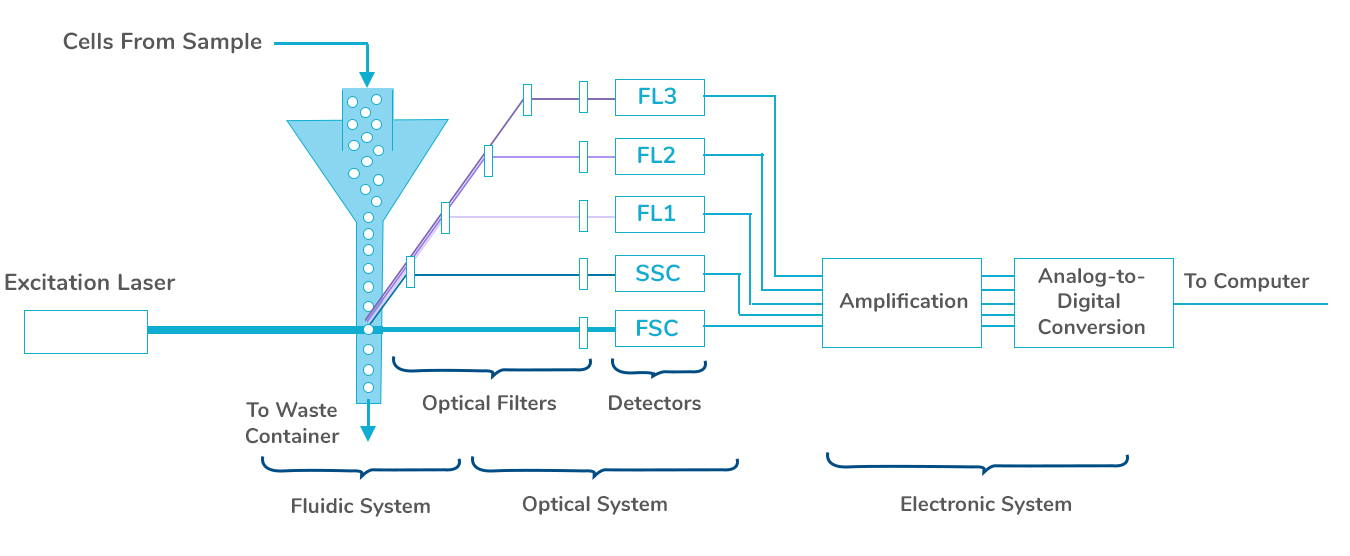What is immunophenotyping by flowcytometry?

- Flow cytometry is a laboratory method used to detect, identify, and count specific cells. This method can also identify particular components within cells.
- This information is based on physical characteristics and/or markers called antigens on the cell surface or within cells that are unique to that cell type.
- This method may be used to evaluate cells from blood, bone marrow, body fluids such as cerebrospinal fluid (CSF).

Why Immunophenotyping by Flowcytometry:
Flow cytometry has been available for several decades and been adapted for use in many areas of clinical testing.
- Sub-classification of leukemias and lymphoma
- Myelodysplastic Syndrome (MDS) diagnosis
- B-MRD (Minimal Residual Disease)- Identification of residual malignant B-Cells (blasts) in B-Cell Acute Lymphoblastic Leukemia after and during the course of treatment
- T-MRD (Minimal Residual Disease)- Identification of residual malignant T-Cells (blasts) in T-Cell Acute Lymphoblastic Leukemia after and during the course of treatment
- CD34 Stem Cell Enumeration (ISHAGE protocol)
- High Sensitivity PNH Assay for diagnosis of paroxysmal nocturnal hemoglobinuria
- Multiple Myeloma diagnosis and differentiation of neoplastic myeloma cells from reactive plasma cells
- MM-MRD- Identification of residual malignant cells in multiple myeloma



 Enquire
Now
Enquire
Now